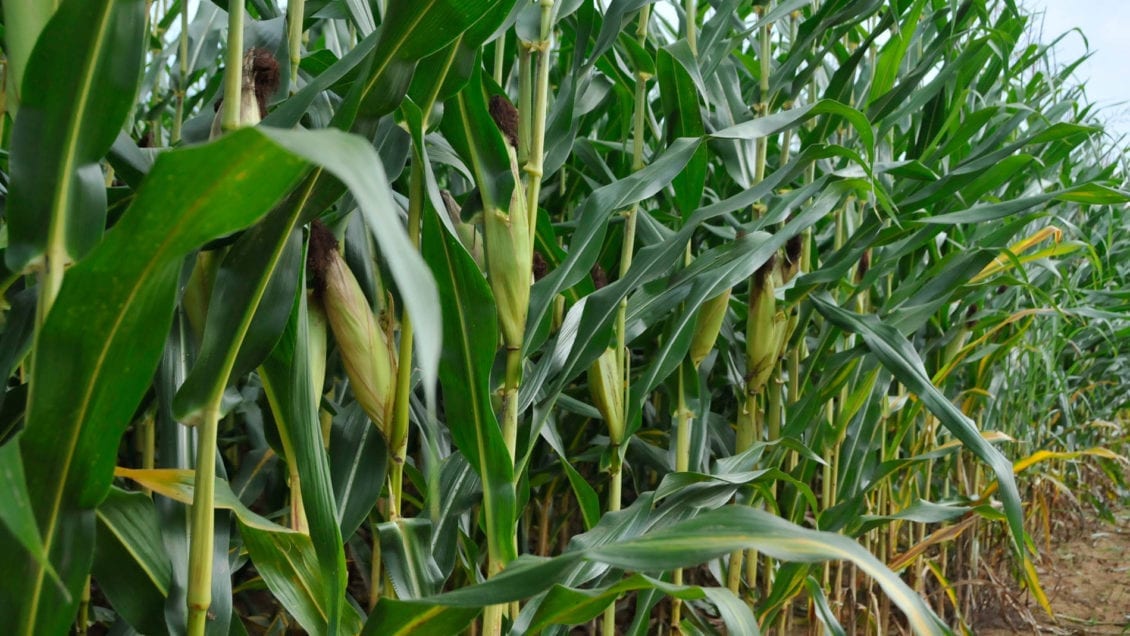
Microorganisms are the better half of plants when it comes to overcoming environmental adversities.
– Vidya Suseela, soil ecologist
Drought can cause issues for grain crops and three Clemson University scientists are working to get to the root of the problem.
The scientists believe crops have a lesson or two to learn from their weedy relatives when it comes to growing in drier soils. The trick is to harbor beneficial microorganisms on and around the roots to enhance the ability of plants to withstand harsher environments.

An interdisciplinary team led by Vidya Suseela, assistant professor in the Department of Plant and Environmental Sciences, received a $649,898 grant from the United States Department of Agriculture National Institute of Food and Agriculture (USDA-NIFA) for their study, Systems approach to impart stress resilience: Enhancing crop drought-resilience of crops through cross-inoculation of beneficial rhizobiome and cover cropping.
Suseela is a soil ecologist and studies the interactions of plant roots with surrounding soils and associated microorganisms. Other researchers involved in the project are Nishanth Tharayil, Department of Plant and Environmental Sciences, and Barbara Campbell, Department of Biological Sciences.
Many ruderal plants are considered weeds and grow on waste lands where they are exposed to harsh environments. An attribute common to most ruderal species is their ability to foster beneficial microorganisms around roots, which in turn helps them perform better under environmental stress. The researchers will start by identifying microorganisms found near root systems that help provide drought tolerance to ruderal grasses. Corn is the crop used in this study.
“In an effort to make corn more drought-tolerant, we will devise strategies to identify and transfer beneficial microorganisms from the ruderal grasses to corn,” Suseela said. “Plant root-associated microbial communities (microbiomes) can stimulate plant growth and enhance plant tolerance to environmental stress such as drought. Utilizing root-microbiome interactions thus offers a promising path to impart drought tolerance in crops, particularly in the face of changing climate.”
In a related study, the Clemson team captured some of the key mechanisms through which beneficial microorganisms from related ruderal plants reduce the water requirements of corn by one-half.
“This maintenance of productivity under drought is a significant finding, given that global climate change is predicted to result in drier growing seasons related to less frequent rain events,” Suseela said. “Microorganisms are the better half of plants when it comes to overcoming environmental adversities and is a potential that remains untapped.”
Once identified, these microorganisms will be transferred from the ruderal grasses to corn.
Transferring microorganisms from ruderal grasses to crops creates a unique challenge for the researchers.
“Using microorganisms from ruderal species to provide drought tolerance for cash crops is a relatively new idea” Tharayil said. “But the real challenge is how to maintain these beneficial microorganisms under field settings. Because of their complexity and resilience, bringing about changes in the soil microbial community composition is easier said than done, and native microbes will outwit the introduced microbiome in no time.”
To overcome this hurdle, the researchers plan to use cover crops closely related to ruderal species to serve as vectors to transport, multiply and maintain beneficial microorganisms in fields. Soil microbes thrive on chemical compounds released by plant roots. To stimulate growth of colonies of beneficial microorganisms in the soil, grass cover crops with root systems and chemical inputs similar to the ruderal species, will be planted in the field before the crop. Tharayil’s expertise is in plant ecophysiology. His group studies plants’ responses to harsher environments and uses various tools to characterize plant chemistry.
“Ruderal species, though natives, cannot be directly introduced into crop fields due to their potential weedy nature,” Tharayil said. “We believe that if we plant cover crops that release chemical compounds similar to those of ruderal grass, we can sustain the beneficial microorganism of the ruderal plants in agricultural fields. The trick is finding the correct match.”
Suseela adds, “Though there are several avenues to increase drought tolerance of crops, our approach, by fostering soil microbial communities and soil health, provides a sustainable method for microbiome-mediated stress resilience in crops, while taking a systems approach in maintaining the health of agroecosystems.”

Campbell is a microbial ecologist who uses molecular tools to understand microbiome diversity, function and interactions with other microbes or higher organisms as well as the environment. She will advise and work with graduate students to characterize root microorganisms in relation to changes in the plant environment.
“We will examine beneficial microorganisms and compare them to original microorganisms, as well as document changes that occur in the microorganisms in corn grown following different cover crops,” Campbell said.
The project is expected to continue through April 2026 and will involve a series of lab, greenhouse and field experiments.
Developing crops that can adapt to changes in the climate is important in helping farmers grow crops to feed the world. Information from the National Oceanic and Atmospheric Administration (NOAA) shows as the climate continues to change, some areas likely will experience increased precipitation and flooding, while other locations likely will experience less precipitation and increased risk of drought.
-END-
Get in touch and we will connect you with the author or another expert.
Or email us at news@clemson.edu
